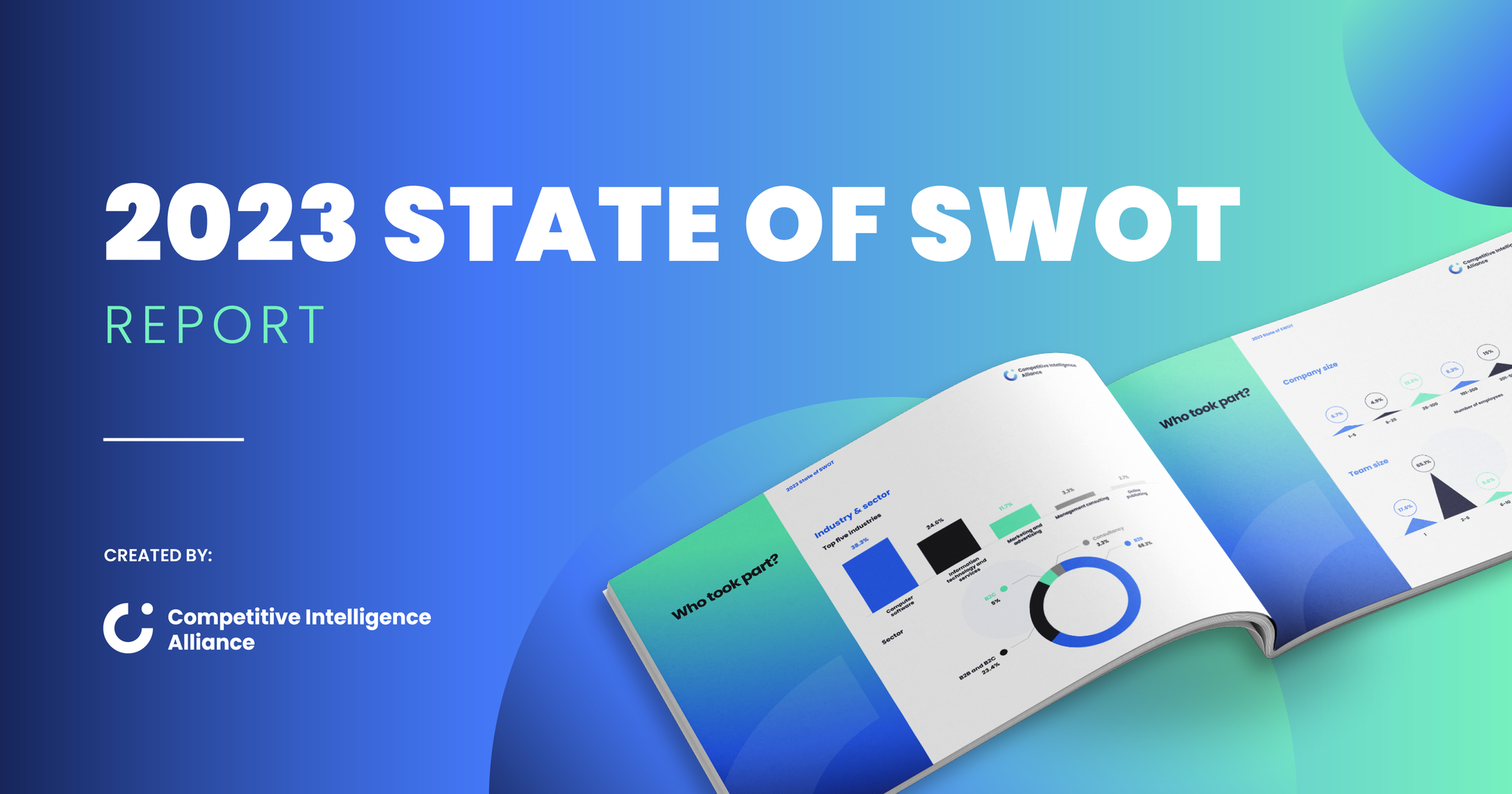What is strategic planning?
Strategic planning is the process of figuring out (i) where you want to go as an org, and (ii) how to get there. All while fielding the challenges and obstacles that could prevent you from getting to your destination.
Think about it this way: When you get on board a plane, you expect your pilot to have some idea of
- How to operate the plane,
- The destination, and
- How to get to that destination, right?
Right.
Now imagine your organization is that plane. Are you flying blind?

A solid strategic plan ensures you’re not.
The elements of a strategic plan
For businesses, this means knowing the:
- Internal state of the business;
- The external state of the industry, or competitive environment;
- Your goals and aspirations for the future.
Knowing these three things gives you all the ingredients you need to cook up a roadmap for future success. You know where you are now, where you want to get to, and what the terrain you’ll be navigating over the next few years looks like.
What is a strategic planning session?
A strategic planning session is a meeting where members from across the business share ideas and formulate a strategic plan for the next few years. Three-to-five year plans are typical, and meetings usually last anywhere from a few hours to a few days, depending on the size of the business.
A strategic planning session typically has multiple goals, including:
- For leaders to share their vision of the future.
- To share knowledge from across the organization.
- To establish clear and measurable goals and milestones along the way to achieving the leaders’ vision.
- To explore possible threats to achieving that vision.
- To assess the success of past and existing plans, and to pivot, change, or adapt those plans as needed.
- To develop a solid, but flexible*, plan for the future.
The importance of flexibility:
*This is important. Your plan should be flexible, but not casually so.
A strategic plan should be well-thought-out; planned carefully; only deviated from under special circumstances.
That said, no one is blessed with the power of foresight. As things change, you want your plan to be adaptable, so it’s still useful as late as year three.
The benefits of holding a strategic planning session
Here are some of the benefits strategic planning meetings offer:
- Gather feedback from across your organization.
- Set long-term goals.
- Define your route to success.
- Develop resilience to change and market disruption.
- Increase internal cohesion.
1 - Gather feedback from across your org
It’s difficult for staff members to feel happy if they don’t feel heard. Your strategic planning sessions give you a chance to bring together diverse perspectives from different departments.
Not only does this keep staff happy, it actually makes for a more effective planning session. Without diverse representation, you risk creating an echo chamber. If there’s a time for hard truths to be heard, for unfamiliar thoughts to be voiced, or for unpopular opinions to be raised, it’s now.
2 - Set long-term goals
Strategic planning meetings are the time to set long-term goals for your business. You can set medium-term goals too, though these usually manifest as milestones on the way to achieving your longer term goals.
The point is to establish where you want to end up as an org in a few years’ time. While no one wants to go backward, this is the time to think strategically. And sometimes a step backward is needed to make way for future progress.
Stepping back to step forward:
For example, some businesses might have no choice but to downsize in the short-term if they’re to survive in the long-term. Others might need to take steps to slow expansion so they can ensure they scale sustainably into the future.
The long term goals you set in your strategic planning meetings should take into account:
- The current state of your organization;
- The state of the economy;
- The state of your industry;
… and they should give you a solid set of motivational goals to work toward.
Strategic planning sessions offer the perfect opportunity to work on these important goals as a team and as a business.
Unlock expert templates, frameworks, and insider content from industry giants like Google and Amazon, right at your fingertips. Become an Insider member today.
3 - Define your route to success
Knowing where you want to end up is only half the battle. The real effort is in defining how you’ll get there.
Creating a roadmap for success is perhaps the largest task you’ll take on in your strategic planning session. Your roadmap is the practical template for how you’ll move from where you are to where you want to go. It needs to be practical, achievable, and realistic while making room for inevitable disruption.
Roadmap considerations:
Your roadmap should take into account, as much as possible, your existing resources, and the trend they’re moving in.
If you’re actively hiring and growing rapidly, you may well have more resources in one and two years from now with which to achieve your goals.

If you’re in a difficult spot in an economic downturn, might you need to make some difficult decisions and initiate some layoffs? And, if so, how much is your productivity likely to fall as a result?
These are the kinds of considerations that a truly competent business strategy will account for, and strategy sessions make it possible.
4 - Develop resilience to change and market disruption
One of the greatest benefits of developing a strategic plan is the resilience your org develops to market disruption.
As part of the planning process, you’ll analyze potential threats in your competitive environment, as well as developing market trends, and brainstorm ways these could impact your org’s ability to reach its goals.
When you take the time to look ahead and account for such threats in your plan, you’ll be more prepared to weather the storm if and when they occur.
5 - Increased cohesion between teams
Bringing leaders and representatives together from across your business gives everyone a chance to get on the same page with your business’ overarching strategy.
It also offers folks the opportunity to voice concerns about the plan, and work together on solutions. When everyone has had a hand in building the solution, everyone has skin in the game and an increased personal interest in the outcome of the plan as a whole.
Getting buy-in like this before the fact is a crucial step in later success when it comes to rolling out your strategic plan.
Once your plan is complete, you’ll be free to disseminate it across your org and broadcast your collective vision for where you’re headed over the next few years.

Who to include in your strategic planning meeting
So, who should you include in your meeting?
• Business leaders and department heads
Business leaders and department heads are obvious choices. Department heads and leaders should, for the most part, be able to speak for their teams as a whole, and are well-placed to gather feedback from their teams ahead of your strategic session.
Members of the leadership team are necessary since they’ll be the ones with the final say on what gets implemented. But try to include at least one person from each relevant department for best representation.
• Less senior staff members
Leaders can’t be expected to know everything. Many organizations see success enlisting representatives in more junior positions as well.
Having representation from those with their boots on the ground, doing the job day in and day out, helps you avoid blind spots. Especially when it comes to analyzing the internal state of the business.
These people might be aware of problems their department heads are not.
Representation can take multiple forms:
What form you decide this representation should take is up to you. You can only invite so many people (as we’ll discuss later), so you might decide to just invite a member of middle management from some of your larger teams.
You can always oversee a process of gathering feedback from the most junior members of staff ahead of the meeting to ensure nothing is missed.
Whatever you choose, do your best to make sure your team represents a fair sample of folks from across the business, who’ll be able to contribute meaningfully to strategic discussions.
• A meeting facilitator
Your meeting facilitator leads the strategic planning session. They’re the one responsible for getting the desired outcome.
Your facilitator can be someone internal or external to the business, but it’s important you choose carefully, as there are pros and cons tied to each choice.
External facilitators:
- May take longer to develop rapport and trust with the group.
- Cost more.
- Do this for a living (and should be pretty good).
Internal facilitators:
- Can be hand-picked by you or a leader.
- Cost less.
- Might not be as skilled at running a session like this.
Whichever you choose, remember that a lot rides on your strategy meeting being successful.
The cost of getting a bunch of business leaders together for a day, or even a few hours, is high. Coming out the other side without a usable plan is almost always a result of poor time management and focus within the meeting.
A strong facilitator won’t be able to completely eliminate the possibility of a meeting that’s less productive than hoped for, but they should be able to drastically diminish it.
• Strategy professionals
Representatives from your market and competitive intelligence teams are clear choices for attendance, too. They should be able to lead or help facilitate some parts of the session, like the SWOT analysis.
Many intelligence pros will be able to comment on the state of your industry, developing trends, and how particular competitors are tackling particular problems.
Intel like this is gold dust for building a plan to overcome the challenges of your competitive environment.
Competitive roles are varied:
But competitive roles are varied, and can be structured in ways that don’t lend themselves so well to long-term strategic thinking.
Depending on how you’ve structured the role, and who you’ve hired, you may or may not have someone with the skills and the knowledge to be of use in a session like this.
For example, your CI person might be excellent at enabling your sales team to beat two or three key competitors in hands-on deal support. But they might never have needed to bring themselves up to speed with industry trends in detail.
So, before you call on them, ask if they’re confident they can bring value to the table.

State of SWOT Report
Download your copy to learn...
- The five top challenges you face performing SWOT, and how to solve them.
- The best ways to measure success or failure post-SWOT.
- Whether SWOT is falling out of favor in modern businesses.
- The best alternative frameworks and how they compare with SWOT.
- The future of SWOT analysis.
How to run a strategic planning meeting in 9 steps (best practices for success)
Ok. We know what a strategic planning session is, why you might want to run one, and who to invite. How do you actually facilitate one successfully?
Here’s a short list of the nine steps we think it takes to succeed at facilitating a strategic planning session:
- Be prepared (do the advance work).
- Define a meeting agenda.
- Set expectations and ground rules.
- Break the ice.
- Get in sync on vision and long-term goals.
- Do a SWOT analysis.
- Identify the current state of your organization.
- Identify external threats on your path to success.
- Build the roadmap.
1 - Be prepared (do the advance work)
As with anything, facilitating a successful strategic planning session starts with the preparation.
This means a number of things:
- Decide who gets an invite: See the previous section for details, but it pays to have representation from across the business.
- Limit the size of the group: You want a good balance of diverse input and snappy decision-making. If the group is too large, you run the risk of a bloated session. 10 people is a good number to start with, but it might take a few tries to settle on a number that works for you.
- Gather feedback early: Diversity of input is critical for success. But not everyone can be present at the meeting. Therefore, it’s important to gather feedback from all corners of the business early. You might wish to survey the entire business a month or two ahead of time. Or you might prefer to hold small brainstorming sessions in department meetings. This also gets stakeholders bought-in ahead of the meeting itself.
- Share materials ahead of time: All the usual meeting rules apply here. Supply attendees with pre-reading materials so they can bring themselves up to speed before the session starts. This way, you can hit the ground running. This can include the current strategic plan, and the results of any recent SWOT analyses, if you’re not going to do one during the session.
- Have an agenda: Again, usual meeting rules apply. When people know what to expect before they arrive, there’s less time spent preparing to begin when the clock has already begun counting down.
2 - Run through the agenda
When it comes to the meeting itself, it pays to fill everyone in on any essential info before you get going.
That means running through the agenda and any changes to it (you shared one beforehand, remember), as well as briefly summarizing critical elements of any pre-reading material.
This orients your attendees, serves as the springboard for the rest of the session, and calms everyone by letting them know what to expect.
3- Set expectations and ground rules
Speaking of getting everyone on the same page…
Facilitating a strategic planning session is no easy job.
There’s a careful balance to strike between making people feel comfortable enough to voice their opinions, concerns, and thoughts openly, and keeping the meeting moving.
You have to be productive. Especially if you’re short on time.
However, shut people down too aggressively in the interests of time, and you risk shutting them down for good, losing access to any insights they might have shared.
That’s why setting expectations, and reiterating those expectations, at intervals throughout the session is integral to its success.
Here are some topics for which you might want to set ground rules early:
• Time:
If you’re short on time, say so.
Make it clear that there’s a lot to get through, and you’ll be cutting people off if necessary.
Explain that it isn’t personal, and that everyone’s input is essential to the success of the session. But everyone’s time is valuable, so tangents, emotional venting, and other such unnecessary excursions aren’t allowed, and you’ll shut them down in the interest of preserving precious time.
• Radical transparency:
This is a concept championed by Ray Dalio, Founder, Co-Chairman, and Co-Chief Investment Officer of Bridgewater Associates, the world’s largest hedge fund, and author of Principles: Life and Work.
As we mentioned above, if there’s an issue, now is the time to shine a light on it. Not to play the blame game, but because without honesty about what’s not working in your org, it’ll be impossible to devise a business strategy that fixes the problems you inevitably have.
It’s crucial, too, that the most junior member of the group knows it’s acceptable, at least for this session, to challenge the most senior member of the group.
This is essential if you’re to build the best plan possible, though may be less comfortable for some members of the panel.
• Everyone deserves a voice:
A point that bears repeating: the success of your session depends on the participation of all panel members.
Coax the quiet ones into speaking up, if they’re willing. Don’t let louder members of the group hold the floor for too long.
Do your best to offer everyone in the group the opportunity to speak equally. Not everyone will take it, but it’s important views are heard from across the business. Without diverse input, your final strategic plan will be vulnerable to avoidable blind spots and oversights.
So, early on, make it clear everyone’s views are welcome.
• But know when to break the rules:
If you’re short on time, you might have to make tactical exceptions to the above rule. While you should seek input from everyone, you must still strive to strike that delicate balance of thoroughness versus time.
If leaders have come to the meeting with certain decisions already made, and some points aren’t going to be up for discussion as a result, don’t waste time with them. Make this clear, and move on.
So remember: good ideas can come from anywhere. You don’t have to respect bad ideas, but you do have to respect that good ideas can come from junior people.
4 - Break the ice
Icebreaker? Yuck.
Sure, they might sound old-fashioned, but icebreakers are useful. Sawyer, Braz, and Babcock led a study into how icebreaker activities correlated with how strongly students reported liking their classmates, their instructor, and the course material itself.
Your strategic planning session will benefit if you can get past any initial awkwardness or resistance to contributing. Resistance is natural when people first come together to sit around a desk, but it’s not conducive to getting to an effective strategic plan.
Icebreaker goals:
That’s why, after establishing ground rules for behavior and setting an agenda, an icebreaker is a great next activity.
The icebreaker should set the stage for success by making everyone more comfortable with each other, and (crucially) with speaking up in front of each other. The process should humanize authority figures and leaders while validating more junior members.

5 - Get in sync on vision and long-term goals
With everyone comfortable and sharing ideas, it’s time to get in sync on the company vision.
This can come from a leader, but don’t neglect this being a collaborative process, at least in part.
Lean on your competitive leads:
Reps from your strategy and competitive intelligence teams can help out here, as they’ll be able to share insights into where the industry is going, and in which areas competitors seem to be investing.
Such data serves as helpful intel that can and should inform your strategy. Even if you decide the right path for your org is to turn away from what others are doing, this should be a conscious and informed decision.
Why alignment is important:
Getting in sync on your vision and goals at this stage gets everyone aligned on your end goals.
These long-term goals, since you’re defining them early, act as North stars, and inform the rest of the session. You’ll define more concrete goals (measurable, medium-term goals) as the session draws to a close.
6 - Do a SWOT analysis
With your end goals established, and with everyone in sync, it’s time to start planning how to achieve them.
But before you can do that, there are a couple of things you need to know:
- The current state of your organization.
- The state of your market and industry.
An accepted method for getting this information out in the open efficiently is a strategic planning SWOT analysis.
In a SWOT analysis, you examine four major elements: your organization’s internal strengths and weaknesses, as well as the external opportunities and threats the market presents you with.
Combine SWOT with other frameworks:
If you’ve the time, you can combine SWOT analysis with other frameworks, like PESTLE analysis, or Porter’s Five Forces analysis, that more closely examine external market factors and other external influences.
But assuming you don’t have the luxury of time, limitations like SWOT’s vulnerability to internal bias reemphasizes the importance of pulling together a diverse set of representatives from across the business for your strategic planning session.
A well-performed SWOT analysis gets you on the right track in terms of thinking about factors that might impact your org’s ability to achieve its goals.
It's not just frameworks, though. Get members from across the entire business involved with a business wargaming session to pressure test your plans before you roll them out.

7 - Identify the current state of your organization
Your SWOT analysis should unveil much about the internal state of your organization. Remembering the importance of radical transparency, by examining your org’s strengths and weaknesses you’ll have begun to reveal much about the current state of the business.
When you know where you are, as well as where you want to go, there’s just one more thing you need to know before you can start mapping out a plan on how to get there.
8 - Identify external threats on your path to success
As the final step before building your roadmap, examine the externals: the market in which you’re working.
Your SWOT analysis should have helped you out here, too. You should now be able to identify opportunities and threats in your competitive landscape that could help or hurt your chances of reaching your goals.
Start linking together your internal strengths with external opportunities to identify possible avenues of growth.
Do the same for threats and strengths, to identify where you might be less vulnerable than some of your competitors, or with weaknesses, to show you where you might want to stay alert and careful.
9 - Build the roadmap
Finally, it’s time for your cohort to chart the course.
By now, you should have facilitated the team spending a very productive few hours (or days) examining all aspects of your business, your market, and your goals from multiple angles, with diverse views and perspectives, offered by your session panel members.
You should now, as a group, be able to articulate the current state of the business, and agreed-upon goals for where you want to end up over the next few years.
Your roadmap is your plan for how you’ll get there. As you build it, remember to take into account possible threats and opportunities in the marketplace, as well as your internal strengths and weaknesses as a business.

TL;DR
To summarize, an effectively facilitated strategic planning session should deliver you the following:
- Synchronicity on your org’s vision, and where you want to go. 🤝
- A sense of the current state of the business. 🧘♂️
- A sense of the external threats and opportunities presented by the market. 🔍
- How you’ll use your org’s resources to tackle those threats and exploit those opportunities to reach your goals and achieve your vision. 🧲
With a successful strategy meeting behind you, and a roadmap in hand, all that’s left to do is share the results of your meeting with the business, and begin to operationalize your strategic plan.
Download the State of SWOT Report
We had far more questions about SWOT analysis for our survey-takers.
🎯 Which SWOT applications offer the best ROI?
👍 How do you measure the success or failure of a SWOT analysis?
🔮 What does the future hold for SWOT analysis? And how do you overcome its inherent challenges?
Want to dig deeper into the reasons why modern attitudes towards SWOT are the way they are? Want to read the real comments and opinions of practitioners to learn how to improve your own application of strategic frameworks in your business?
Grab your no-cost copy of the report today and upgrade your competitive intelligence toolkit. 🧰






.png?v=4fd2470976)